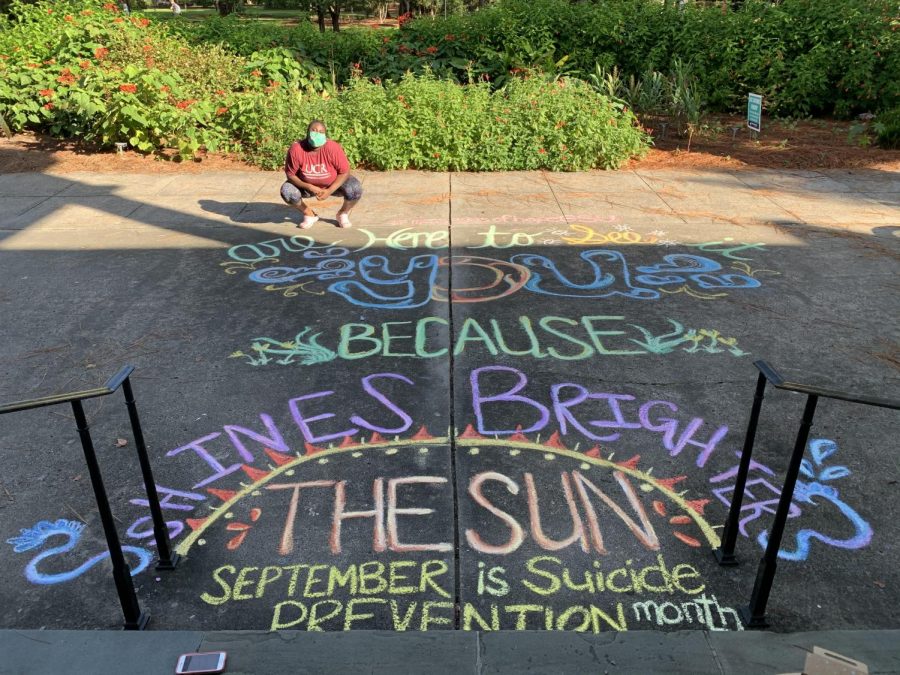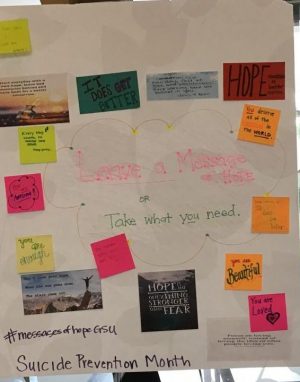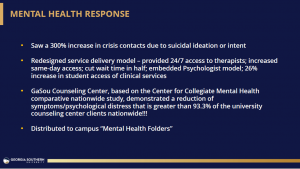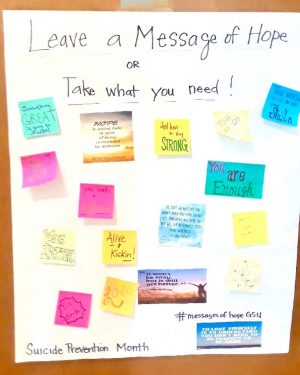Suicide Prevention on the Armstrong Campus
Resources Students Should Know About
September 22, 2020
In honor of Suicide Awareness Month, which continues the entire month of September, the George-Anne Inkwell interviewed the counseling center on their best advice for those thinking about committing suicide or those who know someone who is thinking about it.
“If any individual is struggling with thoughts of suicide, I support them while also letting them know it is not the only solution and help them find hope. Sometimes when a person is experiencing thoughts of suicide, they may not be thinking clear,” Amanda Kort, a Mental Health Counselor, said.
When students feel hopeless, Kort said she shares this quote by Roy Bennett with them, “Never lose hope. Storms make people strong and never last forever.”
For students who are struggling with thoughts of suicide, the counseling center recommended five different helplines that can offer support:
- “Georgia Crisis & Access Line: 1-800-715-4225, a direct line to mental health emergency providers in GA
- National Suicide Prevention Lifeline: 1-800-273-TALK (8255), 24/7 crisis line
- Crisistextline.org: text “HELLO” or “STEVE” (to identify as a person of color) to 741741 (JED)
- Trevor Lifeline: 1.866.488.7386
- Veterans Crisis Line- 1-800-273-8255 Chat”
They also offer a variety of free virtual services to full-time students who are over the age of 18. Services include individual therapy, group therapy, relational counseling (if both people are full-time students), same-day solution sessions, case management, workshops, on-demand workshops, and crisis intervention. Most of the services are also available to all students regardless of their enrollment status. For a complete list of workshops, visit the counseling center’s website.
For those trying to help someone struggling with suicidal thoughts, the acronym HELPP is used to guide an individual on how they should start the conversation about whether their loved one is thinking about suicide and how to get them help.
“H- Hear the person and provide a space of active listening
E- Evaluate the person in distress.
L- Lean in and support them, show concern and offer hope (I care about you and want you to live)
P- Plan to get help by locating available resources
P- Prevent suicides/distress by getting them to professional treatment.”
Education is one of the most important parts of preventing suicide. “Education really is power! Take advantage of the resources to educate yourself because you could save a life; including your own!” Kort said. The counseling center recommends QPR training, which is offered to students, faculty and staff. The QPR training teaches individuals how to ask the question “Are you feeling suicidal? Are you thinking about suicide?”, persuade the person to find support, and refer the individual to resources and help.
Mental illness is not the only cause of suicidal thoughts. Other signs that someone is struggling with suicidal thoughts are talking about wanting to die, being a burden, or feelings of guilt and shame. These individuals may also feel like they have no reason to live or that they feel empty, hopeless and trapped. Behavior changes in individuals thinking about suicide include:
- “Making plans or researching ways to die
- Displaying extreme mood swings
- Withdrawing or saying goodbye
- Making a will
- Giving away important items
- Eating or sleeping more or less
- Taking dangerous risks
- Using drugs or alcohol more often.”
For more information about how to tell if the person is in distress use the acronym IS PATH WARM?
“Ideation-Threatened or communicated
Substance Abuse- Excessive or increased
Purposeless-No reason for living
Anxiety-Agitation/insomnia
Trapped-Feeling there is no way out
Hopelessness
Withdrawing-from friends, family, society
Anger(uncontrolled)- Rage, seeking revenge
Recklessness-Risky acts, unthinking
Mood changes- (dramatic).”
For more information on how to prevent suicide, students can visit the counseling center’s website or read the university’s suicide prevention toolkit.













